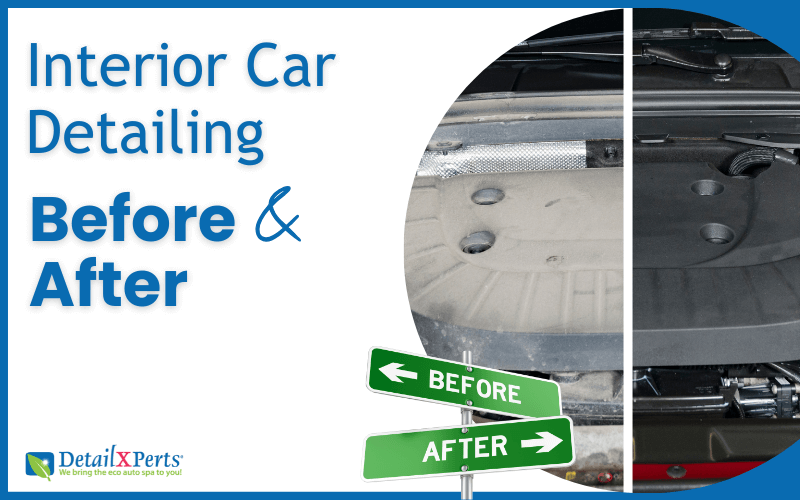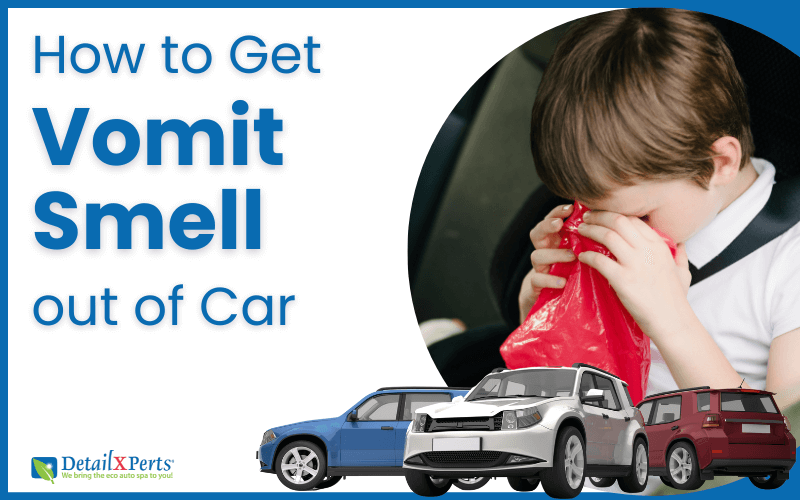Discover how to deep clean car seats like a professional detailer. Car seats gather dirt, dust, sweat, and food crumbs over time. And this accumulated dirt can become a breeding ground for bacteria and allergens, leading to health issues and unpleasant odors. But this won’t become a problem if you establish a regular cleaning routine. Follow our tips to help raise your car interior detailing game.
How to Deep Clean Your Car Seats
The best way to clean car seats involves a series of systematic steps. This approach ensures you clean every part of the seat, including the seatbelts and under the seats. Take these steps:
Collect Your Tools and Cleaning Products
Firstly, gather your car interior detailing tools and supplies. Here is an idea of what you’ll need:
- Car vacuum cleaner with upholstery attachments
- Upholster cleaner for your specific car seat material
- Soft-bristle brush or upholstery brush
- Microfiber car cloths
- Car upholstery shampoo
- Warm water
- Bucket
- Optional: Steam cleaner
Brush the Car Seats
Gently brush the surface of the seats with a soft-bristle brush before vacuuming. This helps loosen and lift dirt for better suction. There are different car wash brush types suitable for car interior detailing. For example, a rubber brush is ideal for removing stubborn pet hair.
Vacuum Car Seats
How to deep clean car seats starts with a thorough vacuuming. This removes loose contaminants, such as dirt, pet hair, crumbs, etc. Try the following technique:
- Remove items on seats, such as children’s car seats or personal belongings.
- Use the upholstery attachment on your car vacuum. Clean the surface of the car seats, starting from the top and working your way down.
- Use smooth, overlapping strokes to cover the entire seat. Swap over to the crevice tool attachment for seams, creases, and folds where dirt gathers.
- Don’t forget to vacuum under the front seats. This is one of the places to clean inside of your car that people often overlook.
You can use either a cordless or corded machine. Need help figuring out which one to buy? See our guide on the best car vacuum cleaners.
Use Stain Remover
After vacuuming, check for stains. If you notice any marks, see our tips on how to remove stains from car seats. You may have to let some stain removers sit for a recommended time. For example, if you apply baking powder directly on a grease stain, leave it for 30 minutes before vacuuming. For lighter stains, a high-quality upholstery cleaner should do the trick.
How to Deep Clean Car Seats Using Steam
The best way to clean car seats involves steam. However, you will need a steam cleaner for cars. This piece of car detailing equipment uses high-temperature steam to sanitize seats, guaranteeing a hygienic environment for you and your passengers. Additionally, steam is great for breaking down stains. The steps are straightforward:
- Hold the steam cleaner nozzle a few inches from the car seat’s surface.
- Move the nozzle across the seat in a slow, deliberate motion, working in small sections. The steam will help dislodge dirt and stains from the fabric.
- Next, use a microfiber cloth to blot the area immediately after applying steam. This action helps absorb loosened dirt and moisture.
- Lastly, leave seats to air dry.
Knowing how to deep clean car interior with steam also includes tackling bad odors. But if you don’t have a steam cleaner, contact a car interior detailing service specializing in steam cleaning. Alternatively, another option is shampooing car seats, see below.
Shampooing Car Seats
The next step is shampooing car seats to remove all traces of dirt and grime. We recommend organic shampoo as it doesn’t contain harsh chemicals that can damage your car seats. These tips ensure you get the best results:
- Mix the warm water with the car upholstery shampoo in a bucket. Be careful not to make it too soapy or it will be harder to rinse clean.
- Dip your soft-bristle brush into the cleaning solution.
- Gently scrub the car seats, paying extra attention to stained or soiled areas.
- Another key point is avoiding over-saturating the seats.
- Remember to clean the seatbelts.
Note that this method is not as effective at killing germs and bacteria as knowing how to steam clean car seats.
Rinse and Dry
It’s important to rinse and dry the area properly after shampooing car seats. Moreover, this attention to detail helps avoid a mold and mildew problem.
- Wipe down the seats with a microfiber cloth dampened with clean water.
- Remove all soapy residue.
- Then, allow the seats to air dry.
Deep Cleaning Leather Car Seats
Dirty leather car seats will need extra attention. Start by sourcing the best car interior detailing products for leather. For instance, go for a non-toxic leather cleaner with a deep-cleaning formula to remove the grime and stains from your seats. Here are the steps:
- Dip a microfiber cloth in the leather cleaner. Microfiber cloths are lint-free and won’t leave behind fibers on your seats.
- Wipe down the leather, paying attention to soiled areas. If needed, see our tips on how to get stains out of leather car seats.
- Use a clean, damp microfiber cloth to wipe away loosened dirt. By all means, repeat this step if your seats are heavily soiled.
- Afterwards, apply a leather conditioner once the seats are clean and dry.
Knowing how to clean car seats made of leather will help restore their appearance and preserve the luxurious feel of your car’s leather interior.
Washing Removable Car Seat Covers
Removable car seat covers are easier to clean. Before washing, treat any stains with a suitable stain remover or pre-treatment product, following the manufacturer’s recommendations.
Alternatively, try a home remedy. For example, if you want to know how to get coffee stain out of car seat cover, try a mix of white distilled vinegar and water. After treating the stains, do the following:
- Firstly, check the washing instructions for the covers. The instructions may vary depending on the material and the brand.
- If they are machine washable, use a gentle cycle and cold water to wash the seat covers. Also, avoid using bleach or harsh detergents.
- After washing, hang the covers to air dry.
Inspect the Seats
Make sure you haven’t missed a spot. How to clean car seats includes the seatbelts. When cleaning, remember to pull the seatbelts out as far as they will go. Equally important, make sure the belts are completely dry before returning them to their normal position. Lastly, if you still catch an odor from your seats, see our tips on how to get bad smell out of car.
Vacuum to Finish
You’re almost there! The final step in how to deep clean car seats is vacuuming the seats again. So, when the seats are dry, go over them once more with the upholstery attachment to remove fine dust particles that may have settled during the cleaning process.
Finally, if you enjoyed the DIY approach to cleaning your car seats, see our other tips on how to detail a car interior. The steps include cleaning your car carpets, mats, and windows to leave them spotlessly clean.
Conclusion
In summary, knowing how to deep clean car seats regularly will help eliminate germs and bacteria. Furthermore, our deep cleaning tips will improve the appearance of your car seats and extend their lifespan. Above all, sanitized, odor-free seats are healthier for you and your passengers.
However, if you don’t have the time or tools to take on the job yourself, we can help. Our trained technicians offer premium car care to help keep your upholstery in pristine condition.








